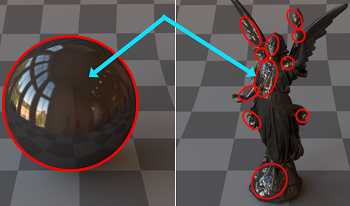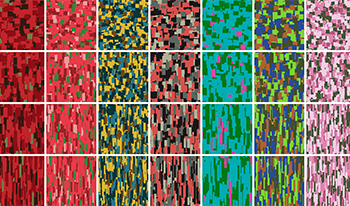
Gloss is an important appearance attribute, and its exact perceptual mechanisms are yet to be fully understood. Previous works attempted to model the relationship between optical and perceptual gloss. The state-of-the-art studies demonstrate that the human visual system has a poor ability to recover surface reflectance and perceived gloss rather depends on image cues that are generated by a complex interaction among optical material properties, illumination, object shape, and its surface geometry. Therefore, perceptual models defined on a particular shape, such as a sphere, may not generalize to other objects. To investigate shape-specific differences, we conducted a psychophysical experiment with a simple sphere and complex Lucy shapes. We scaled the magnitude of apparent gloss to study how the shape affects perceived gloss, and how the role of optical material properties varies between the shapes. We observed significant cross-shape differences, which we argue can be explained by the analysis of the image cues.

The authors explore the influence of the structure of a texture image on the perception of its color composition through a series of psychophysical studies. They estimate the color composition of a texture by extracting its dominant colors and the associated percentages. They then synthesize new textures with the same color composition but different geometric structural patterns. They conduct empirical studies in the form of two-alternative forced choice tests to determine the influence of two structural factors, pattern scale and shape, on the perceived amount of target color. The results of their studies indicate that (a) participants are able to consistently assess differences in color composition for textures of similar shape and scale, and (b) the perception of color composition is nonveridical. Pattern scale and shape have a strong influence on perceived color composition: the larger the scale, the higher the perceived amount of the target color, and the more elongated the shape, the lower the perceived amount of the target color. The authors also present a simple model that is consistent with the results of their empirical studies by accounting for the reduced visibility of the pixels near the color boundaries. In addition to a better understanding of human perception of color composition, their findings will contribute to the development of color texture similarity metrics.